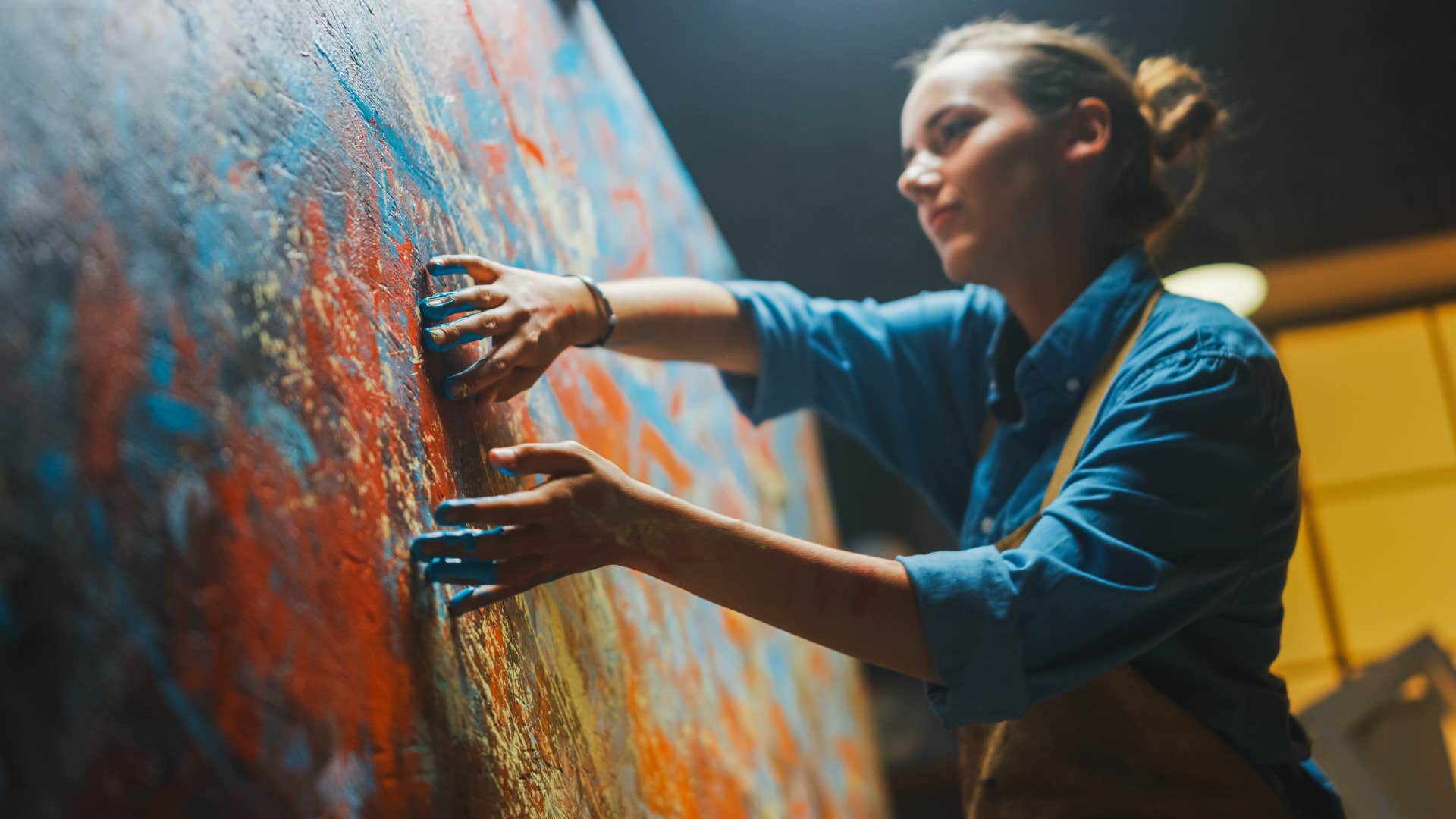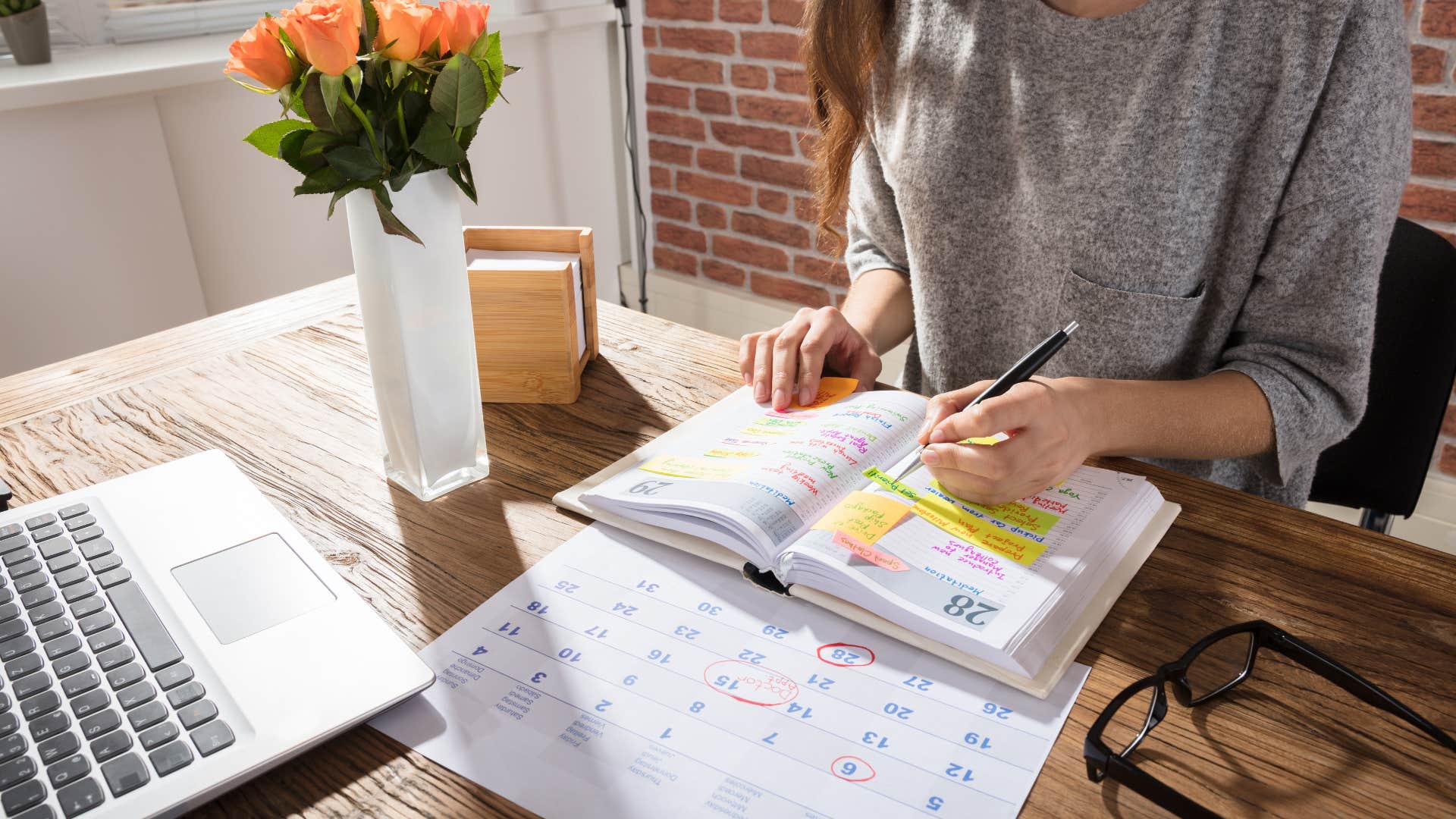9 Little Emergency Tricks Creative People Use When The Ideas Stop Flowing
When inspiration dries up, creative minds don't panic.
 Josh Hild | Pexels
Josh Hild | Pexels Neuroscience tells us that creative flow is a state of intense concentration where ideas flow freely and effortlessly. This happens when we're not stressed or anxious about anything. When faced with a creative block, several quick strategies can help jumpstart idea generation.
This took me many years to internalize, and now I can’t stop myself. I’m a creative maniac most of the time, and this is doing my business a whole lot of good.
Here are the little emergency tricks creative people use when the ideas stop flowing:
1. Follow the 300 rule
 Perfect Wave / Shutterstock
Perfect Wave / Shutterstock
Some years ago, I shared the idea that we shouldn’t expect any traction or engagement from our work until we’ve created and published at least 300 pieces. This isn’t a hard rule, and it applies differently to different kinds of content and ideas.
For clarity, we can apply this to, say, a thread or a YouTube video. It took me writing and sharing hundreds of articles before anything took off.
You will likely succeed far sooner, but don’t expect success or going viral before you’ve produced at mass. Focus on the numbers. Knowing this makes it easier to power on when you might otherwise get disappointed.
2. Decide to be a creative maniac
 Gorodenkoff / Shutterstock
Gorodenkoff / Shutterstock
Don’t listen to the naysayers who tell you to take it slow and ‘just enjoy life.’ No. They want you to be lazy on the sofa with them, as unproductive as all of them.
Creating things is our birthright and the most potent source of life energy when we allow it to flourish. We are composed of the same creative force driving the expansion of the Universe.
Slow down if you’re burning out, yes, but do so to get on the fast track again. Decide to be wildly creative, act like it, and your reality will bend to your wishes.
While the 'mad genius' myth about creativity and mental illness persists, research suggests that while some connection exists, it's not a simple cause-and-effect relationship. Creativity might be associated with particular brain functions, such as greater openness to experience.
3. Become a creative athlete
 Victoriia Palii / Shutterstock
Victoriia Palii / Shutterstock
You can’t create in a dark room all day and expect to maintain a relentless consistency. You must feed and train your body properly in parallel to be creatively athletic.
Don’t eat trash and expect to be motivated. Develop an intimate sense for how your body responds and runs best. This is the secret to those who appear to pull energy from nowhere day after day. They train their bodies in service of their work.
Studies show that physical activity, especially walking, can boost creative output, while spending time in nature can enhance creative thinking and problem-solving. Additionally, a positive mental state, often cultivated through healthy habits, is associated with greater imaginative abilities and innovative thinking.
4. Cut artificial dopamine
 Arthur Bargan / Shutterstock
Arthur Bargan / Shutterstock
You spend five hours a day on social media, youtube, video games, and movies, and then wonder why you’re unmotivated. Short-term pleasure always comes with a price. If you want to be insanely creative, you can’t allow your senses to be numbed by too much fake stimulation.
Artificial dopamine spiking means your receptors become less responsive to ‘normal’ stimuli like writing or making art. Start replacing this passive stuff with creative action, and your body will reward you with a steady flow of positive feelings.
5. Understand the concept of tempering
 Dean Drobot / Shutterstock
Dean Drobot / Shutterstock
In sword-smithing, they use a process called ‘tempering’ to improve the hardness and elasticity of the steel by reheating and then cooling it. A similar effect happens in your journey as a creator.
You must anticipate periods of contraction (cooling) and moments of rejection, or you will quit. It’s all part of an overall strengthening and growth. Stay the course, don’t quit, and you are guaranteed an upward trend of improvement and growth.
Reducing excessive enthusiasm or excitement after achieving a goal can enhance future creativity and motivation. By not becoming overly satisfied with success, individuals may be more inclined to explore new ideas and push their creative boundaries.
Research by Penn State University explained that this approach can be particularly effective for overcoming creative blocks by shifting focus away from the comfort of familiar solutions and towards the exploration of new possibilities.
6. Track your output
 Andrey_Popov / Shutterstock
Andrey_Popov / Shutterstock
When we record our output somewhere visible, a funny thing happens: we fall into playing a game. We try to beat our last score.
We’re more aware of the dent we’re making. Everything becomes more engaged and enjoyable. First, make a commitment to consistent output.
Track your key metrics in an app or wall calendar. Record your creations and their results. Newsletter subscribers, likes, and all. Tracking the impact you’re making will push you to do more.
7. Have a mission bigger than yourself
 Ground Picture / Shutterstock
Ground Picture / Shutterstock
Your work takes on a whole new flavor when you approach it as a means to bring about an impact that goes beyond filling your bank account.
Even if it’s simply to inspire as many people as possible to create something themselves, this is all the purpose you need. Go big. Have eye-watering plans that inform a relentless commitment to producing cool things.
Research confirmed that having a sense of purpose, a mission bigger than oneself, can help overcome creative blocks. This is because focusing on a larger goal can reduce self-consciousness, anxiety, and the pressure to produce perfect work, allowing for a more playful and exploratory approach to creativity.
A strong sense of purpose can provide intrinsic motivation, driving individuals to persist through challenges and setbacks, which are common during creative endeavors.
8. Be results-oriented
 Ground Picture / Shutterstock
Ground Picture / Shutterstock
I come across so many who continue to do the same thing over and over, day after day, with little to no result. They pat themselves on the back come nightfall, saying they were ‘productive’ when they were merely ‘busy.’
You must focus on creating real results, or you will eventually hit a brick wall. Identify what’s working, then do more of it. Take note, even of the smallest things. Be aggressively biased towards results. This will empower you to continue creating hard.
9. Focus on quantity and quality
 Prostock-studio / Shutterstock
Prostock-studio / Shutterstock
It’s not either-or, my friend. You’re bigger than both. You’re not a quality guy sharing one measly post every ten days.
And you’re not a quantity guy, sharing trash you rushed out in five minutes a hundred times a day. You sit at the intersection of both.
Don’t allow scarce thinking to limit you to one or none. It is in the mind. You can do both. You will find the time. When you do, you’ll be surprised at what you’re capable of.
Alex Mathers is a writer and coach who helps you build a money-making personal brand with your knowledge and skills while staying mentally resilient. He's the author of the Mastery Den newsletter, which helps people triple their productivity.

